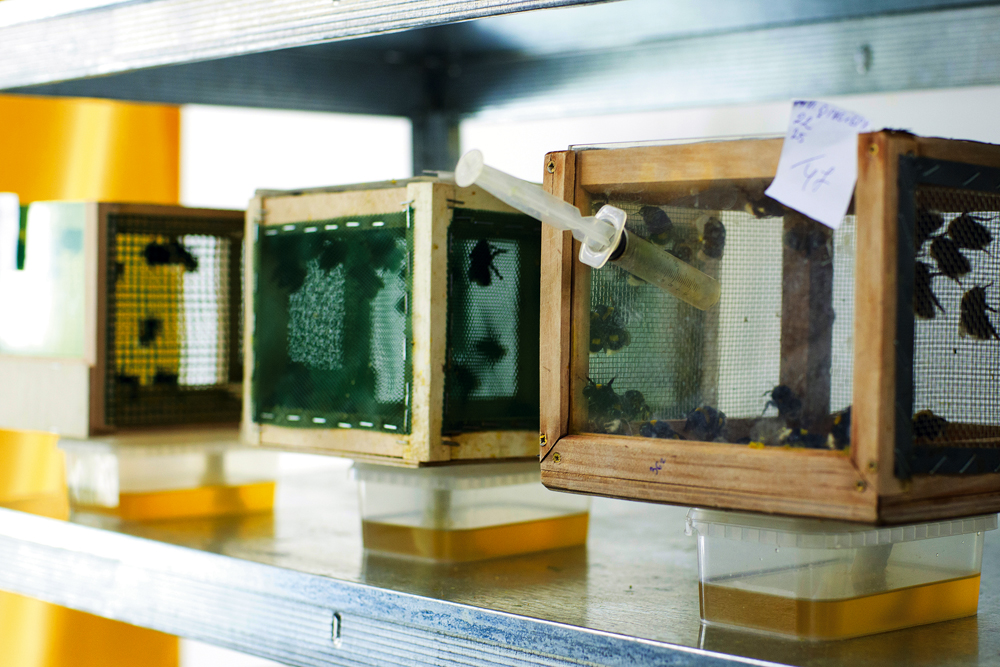Numerous studies by the world's leading agrarian universities show that bumblebees are recognized as the best pollinators of most agricultural crops. They account for 50% of all pollination and have a number of advantages over their relatives, bees. First, bumblebees are larger, their bodies are covered with more hairs, thus they can carry twice as much pollen. Second, bumblebees are more industrious and work for 18 hours a day the entire summer, leave nests in colder and cloudier weather – one "forager" can visit 1,000 flowers per flight! Besides, bumblebees search directly for pollen, not nectar, because they do not stock on honey, but only feed their offspring.
Until recently, Ukrainian producers had to buy beehives abroad or import bumblebees from the Netherlands, Belgium and Israel and grow them to a certain standard. But in 2015, the Dziva Krayina agro research foundation built Ukraine's first biolaboratory and bumblebee farm in the village of Muzychi, Kyiv Region. And now more than a third of Ukrainian greenhouses is pollinated by local, Ukrainian bumblebees, which show excellent results by increasing the yield by 25-30%.
"Our company's employees take part in a scientific research in the field of industrial entomology and grow up to 10,000 bumblebee families. And this is not the limit, we are planning to open another such farm," says Bogdan Maznytskyy, executive director at the Dziva Krayina agro research foundation.
In the wild, a queen bumblebee winters below the ground, in the spring it wakes up and gets to the surface to find food and a place for a nest where a new family will be formed. "At the farm, we can create winter or spring at any time and provide the necessary number of bumblebee families throughout the year," says leading biologist Yuliya Ryabtseva. "Ideal temperature and humidity are remotely controlled while power grid outages are no problem thanks to an autonomous power supply system."
All insects are closely monitored and subjected to "medical checks" for mites and parasites. The bumblebee farm's laboratory grows and carefully selects families that will be dispatched to pollinate outdoor and indoor plants. A family consisting of a 1 queen and 100-120 workers is sent to open fields. During one season, such a family expands to 300-400 insects which efficiently do their work.
A beehive in which a bumblebee family is delivered to a customer is unique. It is made of plywood, which, unlike plastic, "breathes". Its lid is covered with foil to protect bumblebees from the sun and overheating (high temperatures can cause excessive reproduction of insects and loss of efficiency). The hive is made without glue or varnish, it can be easily assembled and disassembled, and is recyclable.
Undoubtedly, a good harvest is achieved through synergistic pollination by several species of pollinators. But in Ukraine, with its early spring and sudden May frosts, bumblebees can significantly improve the yield by flying to work at temperatures which are too low for bees and in cloudy weather.
Archive 2018-2021
Dziva Krayina: Ukrainian Bumblebee Paradise
Numerous studies by the world's leading agrarian universities show that bumblebees are recognized as the best pollinators of most agricultural crops. At Dziva Krayina agro research foundation, bumblebees flourish.






